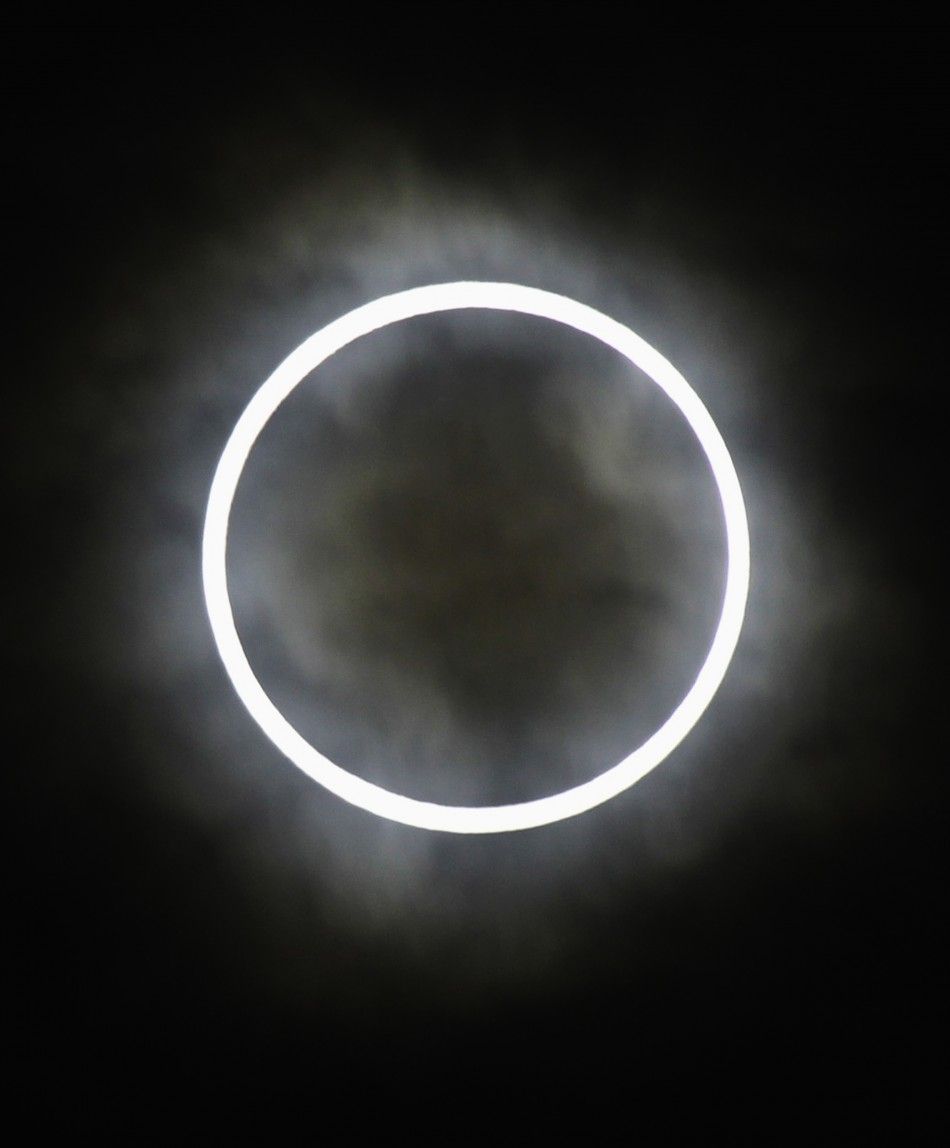Solar Eclipse 2012: Pictures Of The Rare 'Ring of Fire' And Those That Witnessed It [PHOTOS]
A rare annular solar eclipse rested over Asia and parts of the Western United States, as the new moon passed between the sun and the earth. It was the first eclipse of its kind visible in the U.S. in almost 18 years, according to NASA.
The event differentiated itself from typical solar eclipses, when the moon blocks the sun entirely to create momentary night. Sunday's eclipse was notable for the moon's inability to completely cover the sun, creating a blinding ring of fire.
I like to compare different types of eclipses on a scale of 1 to 10 as visual spectacles, said NASA's leading eclipse expert, Fred Espenak of the Goddard Space Flight Center. If a partial eclipse is a 5 then an annular eclipse is a 9.
The atypical eclisped can be attributed to the moon's slightly elliptical orbit, as it passes closer to the Earth on some occassions and farther on others (hence the super moon that graced the night sky earlier this month).
The intensity of the light made the site difficult to stare into, though parts of the West Coast saw the eclispe during sunset, producing stunning visages of a sun disappearing in two ways.
Solar and lunar eclipses happen with some regularity, but are only visible along certain bands of Earth's surface. The next total eclipse to hit the U.S. until 2017.
View the slideshow to see photos of the 2012 solar eclipse and ring of fire.










© Copyright IBTimes 2024. All rights reserved.











